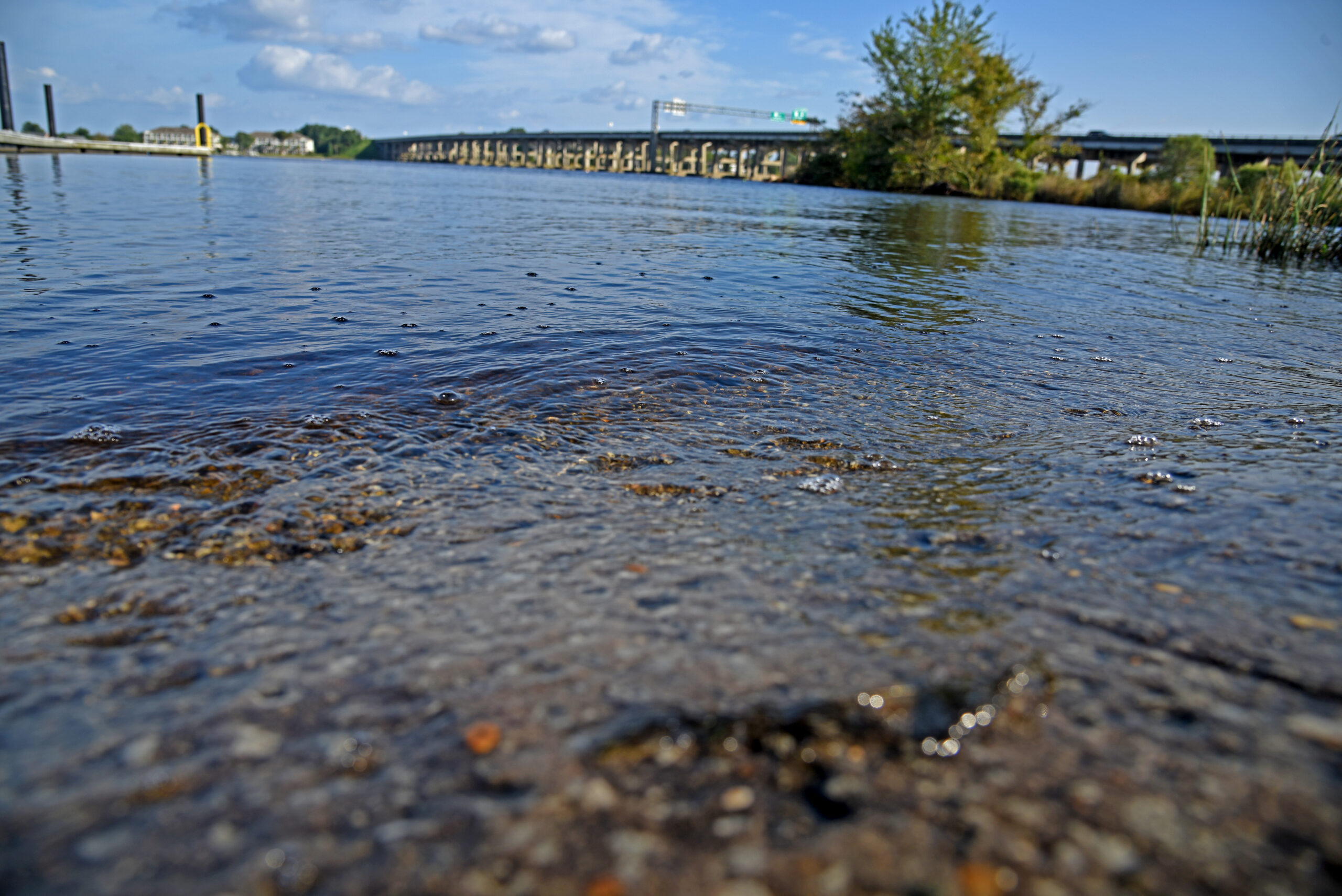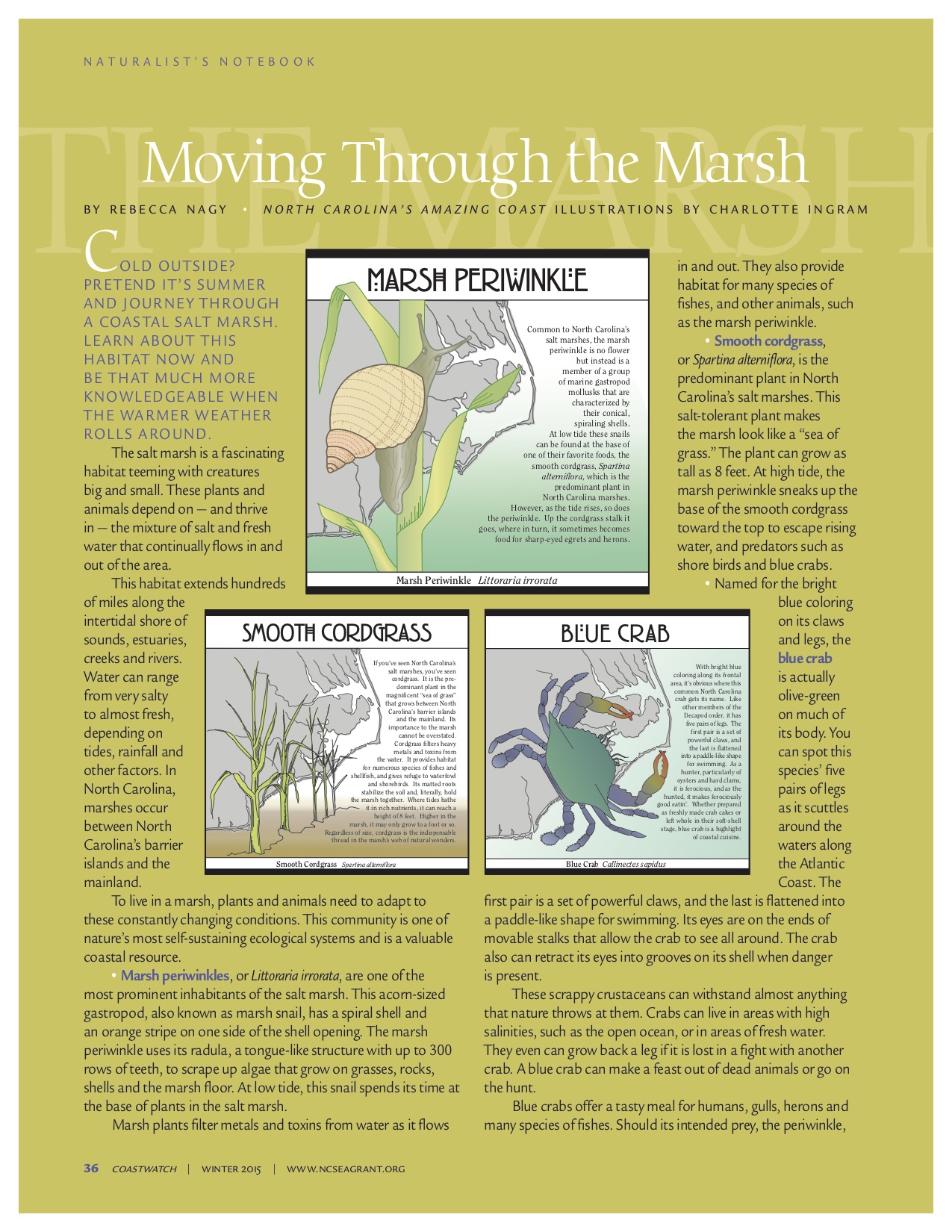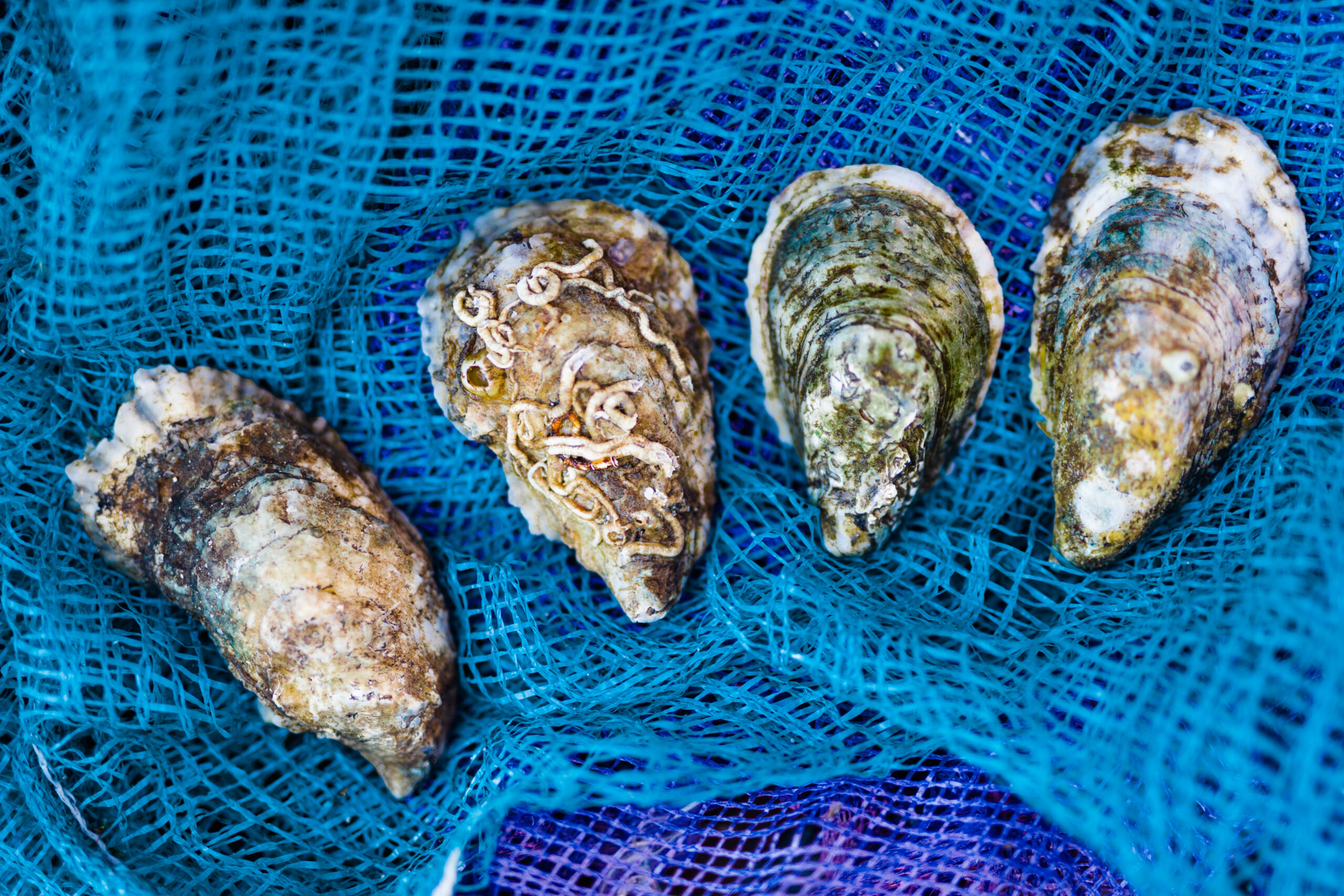FEAR FACTOR: Bonus for North Carolina

John Fear may have been born in Raleigh, but it was his youth in New Bern that set him on a career path as a scientist.
“We’d go seining in the creeks,” he says, recalling the excitement of catching minnows and later, spending hours on the water fishing for bluegill, drum and flounder.

Those early experiences made him aware of broader ecosystems, such as the rivers in his hometown. “I personally noticed changes in the Trent and the Neuse,” Fear notes. “Even as a kid, I wanted to know what was driving the change.”
He fueled that curiosity over the years through academic studies, field research, resource management and research administration. And he still enjoys tossing a lure or otherwise spending the day on the water — now with his wife, Holly and their twins, Will and Leigh.
Fear is as comfortable in the Research Triangle region as he is on the coast. For the past year, he has been deputy director of North Carolina Sea Grant and the Water Resources Research Institute of the University of North Carolina System. With his office at NC State University in Raleigh, Fear’s Sea Grant duties are coastwide. His statewide WRRI focus includes watersheds from the mountains to the sea.
Research lead for both Sea Grant and WRRI, Fear recalls that his own research experience started with an undergraduate oceanography class at the University of North Carolina at Chapel Hill taught by Marc Alperin. An after-class chat resulted in Fear taking a student research position in Alperin’s lab, running tests on rain samples from projects at the UNC-CH Institute of Marine Sciences, or IMS, in Morehead City.
“He gave me my first opportunity to work in a lab,” Fear notes. That experience not only helped to develop an attention to detail, but also to reveal the complexities of how a research team must work together, despite varying locations and roles.
After getting his bachelor’s degree, Fear headed east again, to be a summer technician on water quality, and Fear joined the lab.
For his graduate work, Fear was back on the Neuse. His project involved looking at the sediment water column fluxes of oxygen and nutrients from where N.C. 43 crosses the river to the ferry landings at Cherry Branch and Minnesott Beach.
• FLOW FACTORS
The dynamics of the coastal waters are triggered by flows of oxygen and nitrogen — key factors in the system’s overall nutrient budget. “Freshwater influences are paramount to the estuarine ecosystem,” Fear notes, adding that his first presentation of his research was at an annual conference for WRRI in Raleigh.
“John asked the right questions at the right time. One of the real holes we had was the role of groundwater and sediments in the Neuse system,” Paerl recalls.

“He constructed groundwater-measuring devices — his own coring samplers — that he ended up deploying into the estuary. He was a bargain as a graduate student,” Paerl recalls, noting Fear was comfortable running a boat and often took out other students needing samples or training.
Fear’s research results provided insight into the nutrient budget in the Neuse River estuary. “I was looking at where the nitrogen was going. The data set continues to serve as a baseline to compare to what is going on now,” he says.
At the time, Paerl’s lab was among the first to use membrane inlet mass spectrometry, known as MIMS, that was developed by faculty at the University of Maryland’s laboratory at Horn Point. Fear helped build and maintain the IMS MIMS equipment, tools that now are considered mainstream coastal science. “It is fulfilling to know that I was on the ground floor,” Fear says.
He also was part of the FerryMon team, which had started as a way to measure the impacts of historic flooding from Hurricane Floyd in 1999. Sea Grant was among agencies that provided rapid-response funding for the pilot project by Paerl and Joe Ramus of Duke University to use N.C. Department of Transportation ferries as “ships of opportunity” to gather water quality samples during the crossings multiple times daily.
“FerryMon filled a huge data gap in the monitoring data in the Pamlico Sound — and it still is doing that,” Fear notes.
In addition to his research and technical skills, Fear built upon his ability to cut to the chase when communicating big-picture topics to persons outside marine science.
Each summer, the university’s main campus would offer a bus tour to acquaint new faculty with the state as a whole. Fear was tasked to explain the benefits of IMS research to experts from many other disciplines. “That outreach was very fulfilling,” he recalls. “And it was very beneficial for what I would do later.”
During his graduate years and as a postdoc in Rachel Nobel’s laboratory at IMS, Fear also mentored summer interns and worked with undergraduates in a semester-long environmental studies field site. He enjoyed paying forward the benefits of his own early opportunities. “Teaching the next generation was engrained in me,” he adds.
But encouraging students does not mean coddling them, he adds. “They need to do the work themselves and learn their own lessons.”
• APPLYING SCIENCE
Fear knew that he would thrive with a “more applied focus” rather than in a traditional academic position. He was drawn to the N.C. Coastal Reserve and National Estuarine Research Reserve, with its focus on monitoring and applied research used directly by state and federal resource managers. The Reserve program is part of the N.C. Division of Coastal Management.
“All the Reserve sites are living laboratories,” notes Fear, who served nine years as program research coordinator. “Middle Marsh, in Back Sound, Carteret County, is one the most heavily studied areas because of the plethora of habitats that co-exist there.”
His duties included approving requests for research to be done in the 10 Reserve locations. Researchers came from across the state and beyond. Many traveled to the sites, while others requested samples for comparisons.
Fear first met Susan White, now executive director for North Carolina’s Sea Grant and WRRI programs, when she was the National Oceanic and Atmospheric Administration’s liaison for the Reserve program in North Carolina. During a multi-year program review, she quickly learned that Fear was focused on the science and its application. “When he takes on a task, the job will get done,” she says.
Later White was research director for the National Estuarine Research Reserve system. “North Carolina always had a strong science portfolio in the network,” she says.

Fear sought, received and partnered on varied research projects that included partners at the NOAA laboratories and programs in the Carolinas. Many projects related to various aspects of the state’s Coastal Habitat Protection Plan. In particular, several focused on shoreline stabilization. He also was a valued advisor, serving on panels for North Carolina Sea Grant and the U.S. Marine Corps Base at Camp Lejeune, among others.
Reserve Manager Rebecca Ellin notes that Fear is passionate about coastal resources, yet also is very practical. “He is able to balance the big picture and all the details,” she explains.
His attention to detail serves him well on many fronts, she adds. “His demonstrated success in producing quality science and administering research projects, in combination with his interest in administration, naturally led to him successfully take on some program administration duties while at the Reserve.”
A few years back, Fear scheduled a meeting with partners at North Carolina Sea Grant to discuss potential collaborations. The resulting graduate student fellowship is run jointly — and considered a great success — by the two programs. “Student research provides a tremendous return on investment,” he says.
From an initial student for a single semester in 2010, the fellowship has grown to a highly competitive program that now provides larger projects for two students each year. See page 28 for more on Margaret Garner’s research, the 2013 joint fellow.
• NEW CHALLENGES BECKON
“Not many jobs could have lured me away from the Reserve,” Fear says. But when North Carolina Sea Grant and WRRI were seeking a deputy director in 2013, he saw the new position as a logical next step. “It would allow me to have a bigger impact on the field than what I could accomplish through my work with the Reserve.”

It also would bring him back to a university setting. He already is serving on a graduate committee for Shannon Brown, an NC State master’s student, who earned the joint fellowship in 2014.
White sees Fear as a great fit in terms of his own scientific expertise, administrative experience, and extensive networks within the state and beyond. “He has built trust with so many partners,” she adds.
Paerl agrees. “It has been really good to keep John in the state. He has a great appreciation for how these systems work. And he can pull people into projects by identifying those who can fill certain niches.”
Fear’s first year included major symposiums for Sea Grant and WRRI, along with evaluations of the programs’ processes and impacts to prepare materials for state and federal reviews. Again, woven throughout was a focus on students.
The Sea Grant federal review panel’s report from September 2014 cited a strong program overall — and included a recommendation that North Carolina’s student fellowship program be considered a “best management practice” as a model for the entire Sea Grant network.
Fear also sees the value and flexibility of minigrants to provide proof-of-concept research. “Many are student-initiated,” he explains. In the past year, requests also have come from businesses and faculty new to North Carolina.
He continues to be a trusted advisor, including continuing his role on NOAA’s N.C. Sentinel Site Cooperative steering committee. “This has facilitated the NCSSC receiving funding for a part-time coordinator through Sea Grant,” Ellin notes. “I anticipate that our partnership with Sea Grant will continue to strengthen, especially as both organizations update their strategic plans in the coming years and identify complementary opportunities.”
In addition to leading the WRRI research program that receives federal funding from the U.S. Geological Survey, Fear already is working with the federal agency’s North Carolina offices to look for new collaboration opportunities.
White also notes that Fear is increasing the synergy among research, extension and communications efforts of Sea Grant and WRRI.
She laughs when she hears that some may characterize Fear as quiet. She would rather describe him as a good listener. “I think he is thoughtful — then he tells it like it is,” she says.
What is on the horizon?
“I want to continue to enhance student support,” Fear says, citing potential for fellowships to highlight emerging interdisciplinary topics, or with new partners, such as the Albemarle-Pamlico National Estuary Partnership that has funding from the U.S. Environmental Protection Agency.
He also will run his first call for Sea Grant’s two-year core research proposals. “We will be seeking a wide range of relevant and innovative projects,” he says.
Overall, White appreciates the energy and fresh perspective Fear provides. “When he brings suggestions to improve a program, you know that they will be efficient, effective and engaging.”
This article was published in the Winter 2015 issue of Coastwatch.
For contact information and reprint requests, visit ncseagrant.ncsu.edu/coastwatch/contact/.
- Categories:


